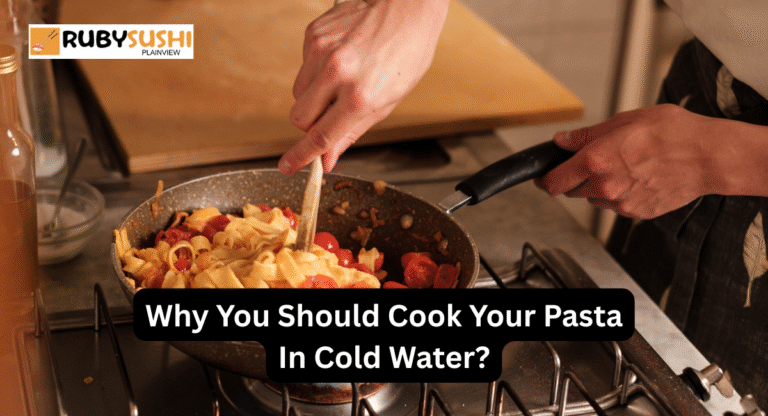
You may be acquainted with the age-old saying that reads, “A watched pot never boils.” You may have heard this spoken before.
Assuming, on the other hand, that you were not forced to watch…or even wait at all? Productively, our assistant food editor argues that there are some circumstances in which you don’t have to wait for the water to boil before cooking your pasta. These circumstances include instances in which you make pasta.
Before turning on the heat, the editor suggests adding the noodles to the pot as soon as possible and using a smaller amount of cold water rather than bringing a large pot of water to a boil. This is because the noodles will be cooked more quickly. This will make it possible to cook the noodles in a shorter amount of time. An obvious benefit is that there will be less water going down the drain as a result of this change. Nevertheless, you may get the same al dente texture in a shorter period of time.
However, despite the fact that bypassing the first stage can seem to be a contradiction in terms, the benefits are impossible to completely reject. Will you continue to have doubts about us? Those who are experts in the culinary arts are in favor of the cold-start application!
It is suggested by the professionals at America’s Test Kitchen that you can cut down on the amount of time you spent cooking by as much as forty-five percent.
With that being said, commencing with a pot of cold water does come with a few restrictions that have to be taken into consideration as being significant. The cook time that is written on the box is rendered worthless as a result of this particular circumstance.
The instructions for cooking that are written on the back of the box are meant to be followed while the food is being prepared in a pot of water that is already boiling.
In order to make advantage of the cold-start approach, you will need to wander about the kitchen and check the level of doneness of the dish at frequent intervals. In the event that you prefer to put your pasta in the pot and then leave it there, it is conceivable that this approach is not the most suitable choice for you.
There is also the cold-start technique, which is another strategy that does not work with all types of pasta. While using this method, the expert recommends avoiding packed pastas such as ravioli and tortellini. These are two instances of packed pastas.
It is another thing that she advises against doing, and that is adding new pasta to a pot of cold water. The specialist said that there is an excessive amount of starch, and that as a result, there would be a great deal of gumminess that would result from it.
If, on the other hand, you are working with dry pasta and are rushed for time, you should think about using the cold-start method. However, you should avoid from adding olive oil to the pot throughout this process.
Conclusion
It may seem strange to cook pasta in cold water, but there are a number of surprise advantages that make it worth a try. This approach makes the procedure easier without sacrificing the end result. It saves energy, cuts down on cooking time, improves texture, and prevents food from boiling over. It’s particularly helpful for smaller dinners or one-pot meals when speed and easiness are the most important things.
Even while conventional ways still work, trying out cold water cooking may make your time in the kitchen more interesting and help you find a new, useful approach to enjoy excellent pasta. Try it out; it could become your new favorite way to do things.
Read More: High Protein Tuna Patties Recipe



